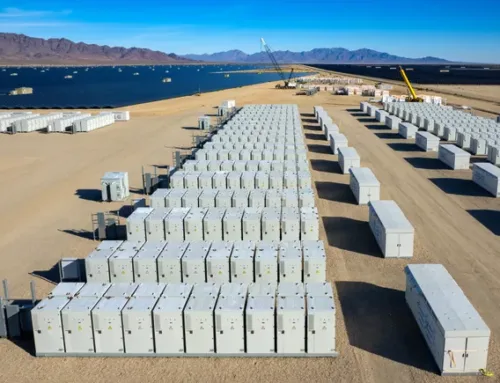Regional EPA staff cuts raise concerns of threats to Ohio’s environmental, climate progres
May 22, 2025
Ohio is expected to feel the effects of cuts to regional Environmental Protection Agency staff, according to experts.
There are about a thousand employees in EPA Region 5, which covers Ohio Michigan, Minnesota, Illinois, Indiana and Wisconsin, according to Nicole Cantello, President of American Federation of Government Employees Local 704, the union for regional EPA employees. The workforce in the region decreased by as much as 20 percent, with more cuts expected by the end of July, according to the union.
“We’re cut to the bone and we don’t have enough staff to begin with at the beginning of this administration,” Cantello said.
So far, U.S. EPA has issued two rounds of deferred resignation offers to its employees, in addition to laying off as many as 100 probationary employees in February. Many of the probationary employees have been rehired but put on paid administrative leave, Cantello said.
The cuts have left the remaining staff “devastated,” Cantello said, as they watch their work being walked back.
“Environmental protection will not happen without having people here to do inspections, people to monitor the lakes, and people to monitor the air all around our six states.”
Five water inspectors were placed on leave, Cantello said, meaning their inspections of sources of pollution along the Great Lakes are on hold.
“The Great Lakes are really important to people in Ohio. Those five inspectors, they would do about 10 to 20 inspections a year,” she said. ” Say they do 15 inspections that’s 75 inspections across the region that would not be done by those employees in the water area.”
Reducing wasteful spending
The cuts are motivated by a desire to remove sources of “waste, fraud and abuse” in the agency, U.S. EPA Administrator Lee Zeldin said in a a message sent to employees in February.
Region 5 staffers have yet to be presented with evidence of such financial waste, Cantello said.
“We’re really concerned that message has taken hold,” Cantello said. “That somehow we’re all over here wasting the administration’s money, or the American peoples’ money, and not doing anything about it. That’s not happening.”
It’s the paid administrative leave that’s wasteful, according to Debra Shore, the Region 5 Administrator during the Biden administration.
“The American taxpayers, our government, are paying employees not to work. So the work isn’t getting done. What are the savings for the taxpayers?” Shore said. “It appears that this administration wants to drive out staff before Congress can exercise its authority.”
The federal Reduction in Force Plan calling for a 50% to 75% reduction in the EPA’s workforce will greatly reduce the agency’s ability to protect the environment, Cantello said, crippling environmental work in the region when coupled with EPA budget reductions proposed by the Trump Administration.
The president’s proposed budget for fiscal year 2026 recommends reducing the EPA’s operating budget by half, with cuts to environmental justice, emissions reduction efforts, programs to control algal blooms in fresh water and spending on lead water line replacement.
The House passed its version of the budget Thursday morning, proposing cuts to environmental and climate justice block grants, and funding for climate solutions in disadvantaged communities. The Senate will now work on its own version of the budget.
The U.S. EPA remains confident in its ability to protect human health and the environment amid pending staff and budget cuts, EPA Associate Administrator for Public Affairs Molly Vaseliou, said in an emailed statement Thursday to Ideastream Public Media.
“We are confident EPA will have the resources needed to accomplish the agency’s core mission, fulfill all statutory obligations, and support President Trump’s agenda.” Vaseliou said in the statement. “With the President’s budget, we can ensure taxpayer dollars are spent on protecting human health and the environment, as well as unleashing energy dominance, implementing permitting reform, making America the AI capital of the world, and bringing back the American auto industry.
Environmental justice cuts threaten Ohio’s funding
Ohio was set to receive more than 24 million dollars in federal funds through the U.S. EPA in 2025 issued through the EPA’s environmental justice division. However, the Trump Administration eliminated the division in March, putting staff on paid leave and halting access to the funds.
Ohio was awarded grant funding last year to support projects like a gas stove replacement program lead by MetroHealth and greenspace conservation through the Trust for Public Land.
Disbanding the division halts environmental work slated for disenfranchised communities, Cantello said.
“An area like East Palestine, Ohio was considered to be [an environmental justice community] because it was low income, and that kind of community really does need help from EPA in order to protect it from pollution,” she said.
It’s up to the courts to decide whether Ohio and other states should have access to the money, Cantello said, but regardless of the courts decision, the agency will still lack necessary staff.
“There’s no one in the environmental justice division anymore to authorize the money being spent,” she said. “It’s just really, really, really a blow to those communities around our six states, including those in Ohio, that bear disproportionate burden of pollution.”
Search
RECENT PRESS RELEASES
Related Post




